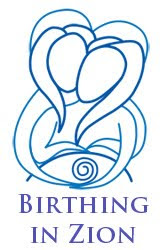Its not surprising because I do know that many of the hymns are arranged to familiar and commonly used tunes. It just was surprising to me to find it popping up. This is the first time I can recall hearing a tune of familiar LDS hymn in a different context.
As I learned more about the tune (its named Kingsford in the LDS Hymnbook), I discovered three different versions of it telling very different stories (in addition to the words of Parley P. Pratt).
First is "The Seven Rejoices of Mary" sung by Loreena McKennit which tells the story of Mary watching her child, Jesus, grow up and the joy she experienced seeing him fulfill his purpose on the earth.
The next, which is likely a more original use of the tune is "Dives and Lazarus" which tells the story of the rich man from Luke 16:20-31 who turns away a beggar in life and then after death finds himself begging for relief from the same beggar he shunned previously.
The third is "The Star of the County Down" which is a Irish folktune, also performed by Loreena McKennit. Its a typical song of a renowned Irish beauty and her admirer's pining after her.
You can hear many versions of the tune I've mention by searching for them on iTunes. I think my favorite is the punk/ska version I found of Dives and Lazarus by June Tabor and the Oyster band. With my love of the RM and Single's Ward soundtracks for their rock/punk/ska/dance/R&B stylings of LDS hymns, its really no wonder.
The wikipedia page about the ballad's tune also lists a few more songs that have used the same tune and good for the person who created the stub, If You Could Hie to Kolob was included in the list.
Lastly, I'll link to this one of particular interest because of the testimony of Christ that is given in the world. O Sing O Sing of Bethelem would be a fitting Christmas or Easter song in LDS ward meetings, as well as for the sacrament hymn with its final verse, saying:
O sing a song of Calvary, its glory and dismay,
Of Him who hung upon the tree, and took our sins away.
For He who died on Calvary is risen from the grave,
And Christ, our Lord, by Heaven adored, is mighty now to save.







